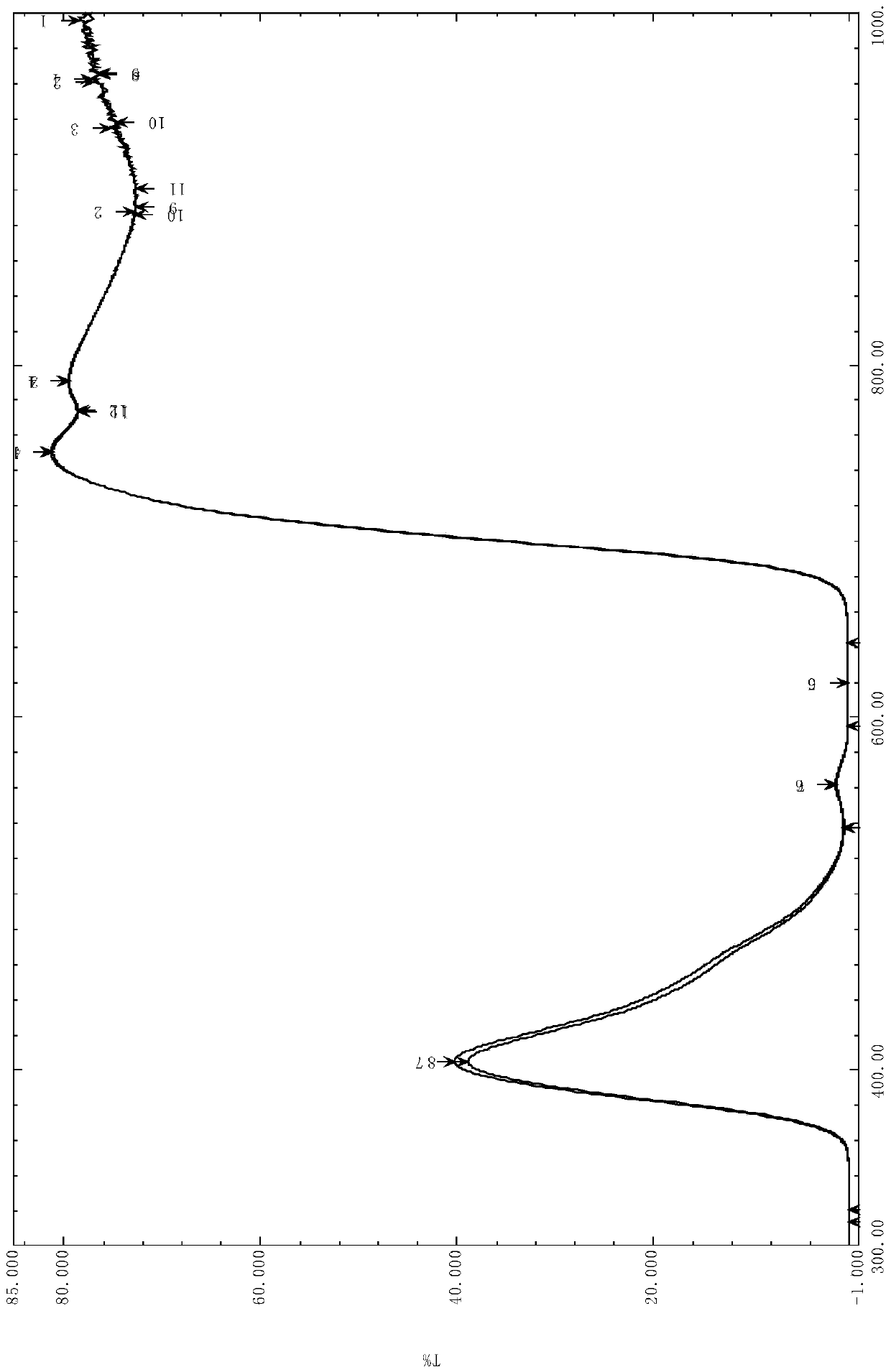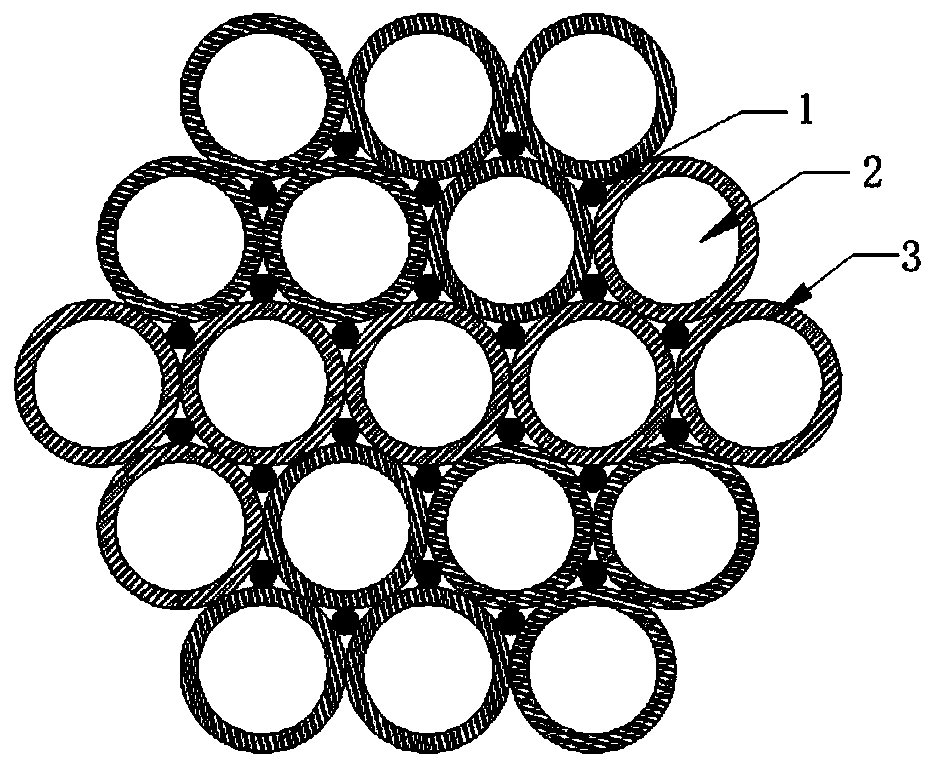Light absorption material glass for optical fiber image transmission element and preparation method thereof
A fiber optic image transmission and light absorption technology, which is applied in glass manufacturing equipment, optical components, glass molding, etc., can solve problems such as poor light absorption performance, poor imaging contrast, and low efficiency of stray light absorption
- Summary
- Abstract
- Description
- Claims
- Application Information
AI Technical Summary
Problems solved by technology
Method used
Image
Examples
Embodiment 1
[0059] First, select the raw materials according to the glass composition of Example 1 in Table 1 and mix them evenly to obtain the raw material mixture. The raw material requirements:
[0060] Quartz sand or crystal powder (high purity, less than 1% of 150μm sieve, 30% of 45μm sieve, Fe 2 o 3 Content less than 1ppm), alumina powder (analytical pure, average particle size 50μm), boric acid or boric anhydride (400μm sieve is less than 10%, 63μm sieve is less than 10%), lithium carbonate (analytical pure, purity ≥ 99.0%), Sodium Carbonate (Industrial Soda Ash), Potassium Carbonate or Potassium Nitrate (Analytical Pure, Purity≥99.0%), Basic Magnesium Carbonate (Chemical Pure, Average Particle Size 50μm), Calcium Carbonate (Analytical Pure, Average Particle Size 250μm ), Manganese Dioxide (Analytical Pure), Vanadium Oxide (Analytical Pure), Neodymium Oxide (Analytical Pure), Cobalt Oxide (Analytical Pure), Nickel Oxide (Analytical Pure).
[0061] And the oxides of variable valen...
Embodiment 2
[0065] The glass composition refers to Example 2 in Table 1. Using the same raw materials and raw material requirements as in Example 1, weigh part of the raw material mixture and put it into a quartz crucible, and melt it at a temperature of 1400 ° C for 10 hours. During the glass melting process, the glass is Stir 2 to 3 times to make the glass melt evenly. After the glass is melted, the glass melt is quenched. After quenching, the clinker glass is dried and pulverized to obtain clinker glass powder. The raw material mixture of Example 2 is mixed evenly with a mass ratio of 1:3, put into a quartz crucible; melted at 1460°C for 5 hours, and 2-3 times during the glass melting process Stir, after the glass is melted, clarify at 1450°C for 3 hours, cast the molten glass into specified specifications, vibrate evenly, and then anneal to obtain the light-absorbing material glass of the present invention.
[0066] The basic properties of the sample are shown in Table 1. The visible ...
Embodiment 3
[0068] The actual composition of the glass refers to Example 3 in Table 1. Using the same raw materials and raw material requirements as in Example 1, weigh part of the raw material mixture and put it into a quartz crucible, and melt it at 1600 ° C for 6 hours. During the glass melting process, the glass Stir 2 to 3 times to make the glass melt evenly. After the glass is melted, quench the glass melt. After quenching, dry and pulverize the clinker glass to obtain clinker glass powder. Then mix the clinker glass powder with the 1 The raw material composition of Example 3 is mixed and the raw material mixture is mixed evenly with a mass ratio of 1:2.5, and put into a quartz crucible; melted at 1500 ° C for 3 hours, and 2-3 After the glass is melted, it is clarified at a temperature of 1460°C for 2 hours, and the molten glass is cast into a specified specification, and then annealed to obtain the light-absorbing material glass of the present invention.
[0069] The basic properties...
PUM
| Property | Measurement | Unit |
|---|---|---|
| Crystallization temperature | aaaaa | aaaaa |
| Thermal expansion coefficient | aaaaa | aaaaa |
| Crystallization temperature | aaaaa | aaaaa |
Abstract
Description
Claims
Application Information
 Login to view more
Login to view more - R&D Engineer
- R&D Manager
- IP Professional
- Industry Leading Data Capabilities
- Powerful AI technology
- Patent DNA Extraction
Browse by: Latest US Patents, China's latest patents, Technical Efficacy Thesaurus, Application Domain, Technology Topic.
© 2024 PatSnap. All rights reserved.Legal|Privacy policy|Modern Slavery Act Transparency Statement|Sitemap



